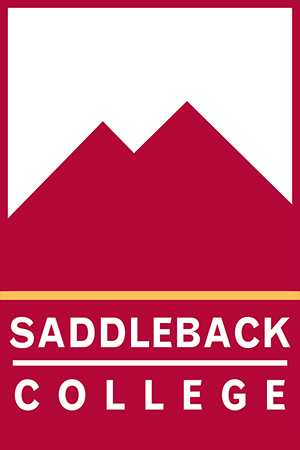Christopher Larkin 30th October 2011
The Occupy Wall Street Movement in American Political Thought
―God Forbid we should ever be twenty years without such a rebellion.‖ Thomas Jefferson, 1787.
This is the phrase plastered across Facebook, photo shopped onto a pointing Uncle Sam-like Jeffersonian figurine. It employs the famed words of one of the founders of the United States, to invoke a sense of civic responsibility – questioning the very foundations of someone’s American identity if they do not heed the call of one of the founders, and join the Occupy Wall Street movement. This phrase was taken from Jefferson’s Letter to William S. Smith (1787), but it is immediately followed by the caveat, “The people cannot be all, and always, well-informed. The part which is wrong will be discontented in proportion to the importance of the facts they misconceive.” Jefferson’s position was that rebels and rioters were misinformed as to the true state of affairs, and only incited rebellion as a result of pervading ignorance. However, in the case of Occupy Wall Street, it is the complete opposite. Generally, the protesters are well informed. It is not ignorance, but the expansive access to information over the past several decades, which has stoked the fires of antipathy in the American public.
This being said, the protestors are forgiven for their presumed alliance with Jefferson; although, not all of them. The ambiguity of direction amongst the movement’s adherents exemplifies the persisting disunity on the left of the political spectrum. The movement has deliberately abstained from declaring the pursuit of specific policy aims. Instead, working within the wide parameters of greater egalitarianism and opportunity, invites support from a
significantly broader base. It can be likened to many memorable events throughout U.S. history: from the hippy movement of the 60s to as far back as the transcendentalist movement in the 19th Century. Ralph Waldo Emerson described the famous Chardon Street Convention of 1840.
“The singularity and latitude of the summons drew together, from all parts of New England and also from the Middle States, men of every shade of opinion from the straitest orthodoxy to the wildest heresy, and many persons whose church was a church of one member only. A great variety of dialect and of costume was noticed; a great deal of confusion, eccentricity, and freak appeared, as well as of zeal and enthusiasm. If the assembly was disorderly, it was picturesque. Madmen, madwomen, men with beards, Dunkers, Muggletonians, Come-outers, Groaners, Agrarians, Seventh-day-Baptists, Quakers, Abolitionists, Calvinists, Unitarians and Philosophers, all came successively to the top, and seized their moment, if not their hour, wherein to chide, or pray, or preach, or protest.”
The heterogeneity of the Chardon Street Convention is also one of the defining features of the Occupy Wall Street movement. Some of the prominent participants that have caught the media’s eye over the past few weeks have been the anarchists. The 20th century American anarchist, Emma Goldman, describes the primary position of the anarchists, ―that all forms of government rest on violence, and are therefore wrong and harmful, as well as unnecessary.‖ An anarchist utopia would necessitate the state shrinking and eventually completely dissolving. It is an extreme take of the Jeffersonian position that the central state should not have much power. However, on the other side of the left there are the socialists who advocate a strong central state which controls central financial institutions in the aim of spreading the wealth of the nation equally. While the left and liberals have at times been at logger heads throughout American history, the lefts greatest victories have come from cooperation with liberals. David Greenberg of Rutgers University writes: ―…each period of progressive change in the last century—the Progressive Era, the New Deal, the New Frontier and Great Society—gained energy and power
from a left-liberal coalition.‖ While I do not think that Occupy Wall Street is a strictly liberal movement, it is definitely more liberal than conservative.
While their specific political aims are unclear, it is certain that the participants of Occupy Wall Street are angry and embittered. They are angry at the pro-business policies of the Bush years, and perhaps even more, the unwillingness and apprehension of the Obama government to confront the business world and push through thorough reform. The conservative activists have branded Occupy Wall Street as un-American. Scott Brooks, the 2010 candidate for the Minnesota State Legislature, said when asked about his trip to Occupy Wall Street ―Before I arrived, I could smell the stench of their unwashed bodies”, and Wall Street Journal writer, James Taranto wrote ―These days a ‘progressive’ is someone who believes indoor plumbing is a tool of oppression.‖ The chides of the right wing embody conservative America’s animosity for the movement.
The discontent with the Obama administration is glaringly clear now. The movement could even be viewed as a protest against his inability to reform the pro-business legislation pushed through under Bush. As pointed out by Greenberg, a coalition amongst the liberals and the left is the most effective tool for change. While Obama is certainly wary about aligning himself too heavily with the protestors, it is implicit within all of this that he must now do something, that it is his duty to run and win the 2012 elections. Obama surely doesn’t want to scare off his middle-of-the-spectrum support as we approach 2012. Yet he also knows, as we do, that while Occupy Wall Street started out as a small movement by a group of neo-hippies in New York, it is now a national phenomenon, with a presence in most major U.S. cities. Obama will have to respond to Occupy Wall Street in his election pledges. One thing is for sure: that the
American left is aligning with the liberals in a tighter and tighter network, with greater agency and advocacy than either can have alone.
“G-d forbid we should ever be twenty years without such a rebellion.” — Thomas Jefferson, 1787.
This is the phrase plastered across Facebook, photo shopped onto a pointing Uncle Sam-like Jeffersonian figurine. It employs the famed words of one of the founders of the United States, to invoke a sense of civic responsibility – questioning the very foundations of someone’s American identity if they do not heed the call of one of the founders, and join the Occupy Wall Street movement. This phrase was taken from Jefferson’s Letter to William S. Smith (1787), but it is immediately followed by the caveat, “The people cannot be all, and always, well-informed. The part which is wrong will be discontented in proportion to the importance of the facts they misconceive.” Jefferson’s position was that rebels and rioters were misinformed as to the true state of affairs, and only incited rebellion as a result of pervading ignorance. However, in the case of Occupy Wall Street, it is the complete opposite. Generally, the protesters are well informed. It is not ignorance, but the expansive access to information over the past several decades, which has stoked the fires of antipathy in the American public.
This being said, the protestors are forgiven for their presumed alliance with Jefferson; although, not all of them. The ambiguity of direction amongst the movement’s adherents exemplifies the persisting disunity on the left of the political spectrum. The movement has deliberately abstained from declaring the pursuit of specific policy aims. Instead, working within the wide parameters of greater egalitarianism and opportunity, invites support from asignificantly broader base. It can be likened to many memorable events throughout U.S. history: from the hippy movement of the 60s to as far back as the transcendentalist movement in the 19th Century. Ralph Waldo Emerson described the famous Chardon Street Convention of 1840.
“The singularity and latitude of the summons drew together, from all parts of New England and also from the Middle States, men of every shade of opinion from the straitest orthodoxy to the wildest heresy, and many persons whose church was a church of one member only. A great variety of dialect and of costume was noticed; a great deal of confusion, eccentricity, and freak appeared, as well as of zeal and enthusiasm. If the assembly was disorderly, it was picturesque. Madmen, madwomen, men with beards, Dunkers, Muggletonians, Come-outers, Groaners, Agrarians, Seventh-day-Baptists, Quakers, Abolitionists, Calvinists, Unitarians and Philosophers, all came successively to the top, and seized their moment, if not their hour, wherein to chide, or pray, or preach, or protest.”
The heterogeneity of the Chardon Street Convention is also one of the defining features of the Occupy Wall Street movement. Some of the prominent participants that have caught the media’s eye over the past few weeks have been the anarchists. The 20th century American anarchist, Emma Goldman, describes the primary position of the anarchists, ―that all forms of government rest on violence, and are therefore wrong and harmful, as well as unnecessary. An anarchist utopia would necessitate the state shrinking and eventually completely dissolving. It is an extreme take of the Jeffersonian position that the central state should not have much power. However, on the other side of the left there are the socialists who advocate a strong central state which controls central financial institutions in the aim of spreading the wealth of the nation equally. While the left and liberals have at times been at logger heads throughout American history, the lefts greatest victories have come from cooperation with liberals. David Greenberg of Rutgers University writes: ―…each period of progressive change in the last century—the Progressive Era, the New Deal, the New Frontier and Great Society—gained energy and powerfrom a left-liberal coalition. While I do not think that Occupy Wall Street is a strictly liberal movement, it is definitely more liberal than conservative.
While their specific political aims are unclear, it is certain that the participants of Occupy Wall Street are angry and embittered. They are angry at the pro-business policies of the Bush years, and perhaps even more, the unwillingness and apprehension of the Obama government to confront the business world and push through thorough reform. The conservative activists have branded Occupy Wall Street as un-American. Scott Brooks, the 2010 candidate for the Minnesota State Legislature, said when asked about his trip to Occupy Wall Street ―Before I arrived, I could smell the stench of their unwashed bodies”, and Wall Street Journal writer, James Taranto wrote ―These days a ‘progressive’ is someone who believes indoor plumbing is a tool of oppression. The chides of the right wing embody conservative America’s animosity for the movement.
The discontent with the Obama administration is glaringly clear now. The movement could even be viewed as a protest against his inability to reform the pro-business legislation pushed through under Bush. As pointed out by Greenberg, a coalition amongst the liberals and the left is the most effective tool for change. While Obama is certainly wary about aligning himself too heavily with the protestors, it is implicit within all of this that he must now do something, that it is his duty to run and win the 2012 elections. Obama surely doesn’t want to scare off his middle-of-the-spectrum support as we approach 2012. Yet he also knows, as we do, that while Occupy Wall Street started out as a small movement by a group of neo-hippies in New York, it is now a national phenomenon, with a presence in most major U.S. cities. Obama will have to respond to Occupy Wall Street in his election pledges. One thing is for sure: that theAmerican left is aligning with the liberals in a tighter and tighter network, with greater agency and advocacy than either can have alone.


















